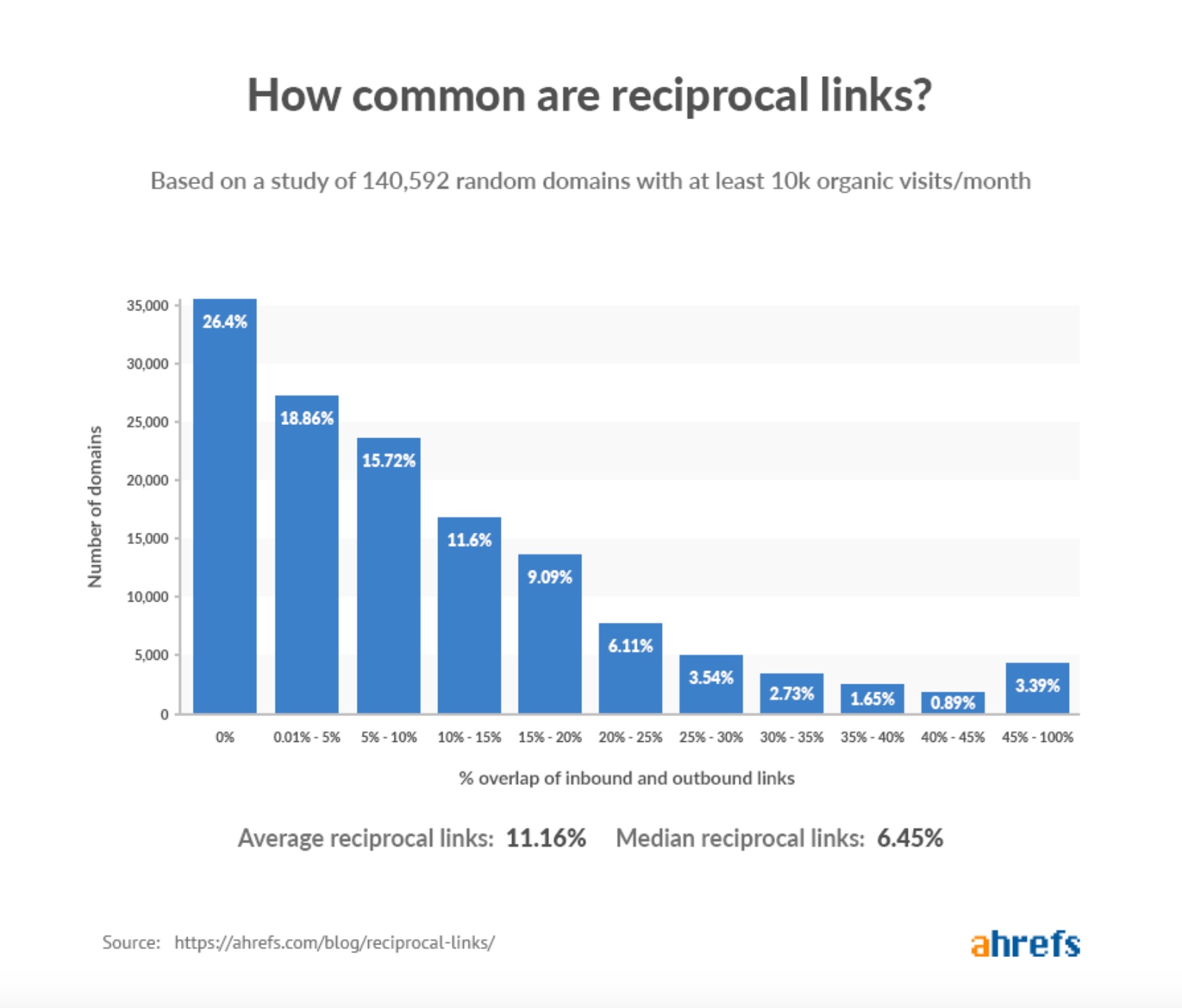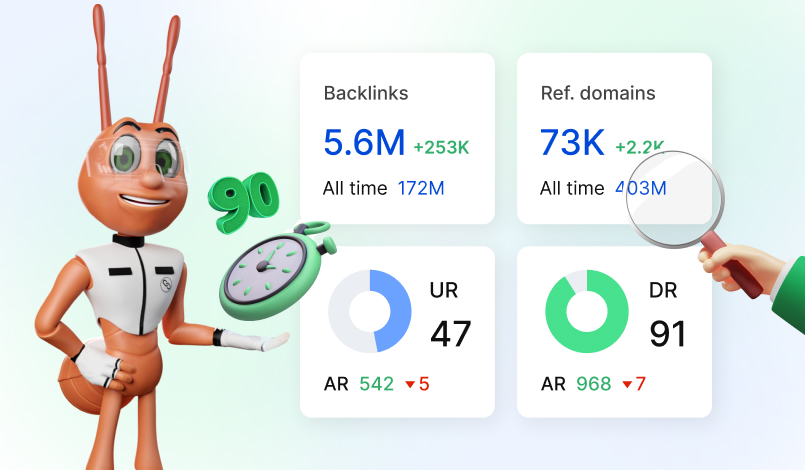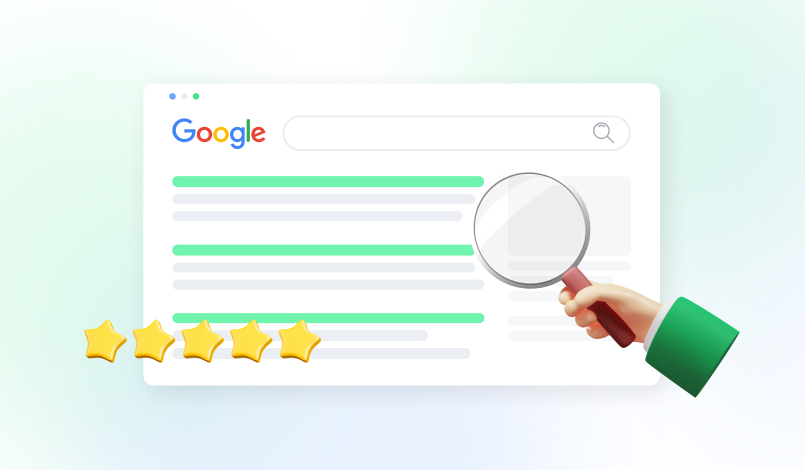Irina is a senior SEO specialist with more than 8 years of search engine optimization experience. At Backlinkers, she shares her experience to help you create a strong link profile to achieve TOP rankings.
Link Exchanges in 2024: Effective SEO Strategy or Outdated Practice?

If you’ve been in the world of SEO for a while, you may have been approached by website owners and bloggers with link exchange requests. As a link building agency, we frequently encounter this in our practice. But, is link exchanging still as effective as it was in the early 2000s?
Many prominent websites still use this strategy to boost their search engine ranking, despite Google’s guidelines identifying it as one of the most common types of link schemes. So, why is it still popular on the web?
This guide will delve into the current terrain around this SEO approach. We will discuss why it still works, Google’s perspective on this method, and how to implement it safely to build your link profile.
- What Are Link Exchanges?
- The Concept and Functionality of Link Exchanges
- The Evolutionary Journey of Link Exchanges: From Inception to Now
- The Significance of Link Exchanges in SEO
- Google’s Perspective on Link Exchanges
- The Influence of Link Exchanges on SEO in 2024
- Various Forms of Link Exchanges
- Assessing the Efficacy of Link Exchanges
- Safe Implementation of Link Swaps
- Utilizing Link Exchanges for Referral Traffic & Brand Promotion
- Where to Find Link Exchanges
- Wrapping Up
- FAQs on Link Exchanges
- Other Articles
What Are Link Exchanges?
The concept of link exchange is simple. It is where two websites mutually link to each other to enhance their SEO efforts and promote their website’s content, products, or services.
Back in the day, the common belief was the more exchange links a site had, the better the site’s ranking and the more organic traffic it would amass. This was because of Google’s strong preference for backlinks, as it viewed them as ‘votes of trust.’ But this position has since changed due to the ever-changing search engine algorithms, which we will discuss later.
Typically, you’ll find link swaps on both new and well-established sites. In fact, Ahrefs has recently evaluated about 140k sites with an average of 10k monthly site visitors to determine the popularity of the link exchange strategy.
Surprisingly, 73.6% of these sites employed this practice. The study also revealed that 19% of web pages they link to naturally link to them. But is it really effective in 2024 or just a waste of resources?

Source: Ahrefs
The Concept and Functionality of Link Exchanges
Basically, a link exchange is a ‘scratch my back, I scratch yours’ type of agreement. Like other link building tactics, the primary goal of cross linking is to boost a site’s ranking in search engine result pages and its domain authority to attract more organic traffic. Since search engine algorithms view these links as a ‘trust’ signal, the more incoming links a site has, the higher its search engine rankings.
Now, it works when website owner A reaches out to website owner B via an outreach email or by leveraging Slack and Facebook groups with a link exchange request. In other scenarios, there may be an offer of publishing links on multiple sites or multiple links on a site.
Such link exchange requests are usually referred to as black-hat SEO techniques since they often involve a deal or exchange in return for the content link. But, a link exchange can be white-hat if you place natural links to another site in your content and they reciprocate the favor once they discover your natural link.
Typically, website owners look for related sites that could also benefit from incoming links. Website owner A then will place a relevant hyperlink in their content, and website B returns the favor by linking back to the same website A. And if there are no excessive link exchanges, and both of the websites’ users benefit, this is basically considered as white-hat and in line with Google’s Webmaster Guidelines.
But, the link exchange landscape has changed significantly over the years. Nowadays, you can’t get ahead by adding reciprocal links at scale without evaluating the quality of such outbound links.
The Evolutionary Journey of Link Exchanges: From Inception to Now
It’s no secret that search engines have more ranking factors today than they did a few years ago. As such, there was less focus on the quality of inbound or outbound links on a website back then. You would find many website owners publishing several low-quality links and still having plenty of link juice and high search rankings.
In fact, they would take advantage of the system by creating a network of sites for the sole purpose of exchanging website links (also known as link farms). In turn, this black-hat technique would lead to unhelpful search results, affecting the user experience.
Today, the algorithm has evolved and continues to change to provide an enhanced user experience. As such, websites that use link schemes risk getting penalized, leading to a significant decline in the use of this practice.
Nowadays, it’s better to focus on creating high-quality content that attracts natural links instead of focusing on building your link profile and boosting rankings in search engine results.
The Significance of Link Exchanges in SEO
As you can see, there was plenty to gain when exchanging links in terms of SEO during the early days of link exchange. However, due to the ever-changing algorithm updates, the SEO value of this practice has drastically diminished.
This is because the emphasis has shifted from quantity to quality, meaning Google prioritizes outgoing links to authoritative and relevant websites instead of excessive links to low-quality and irrelevant ones.
In addition, low-quality backlinks not only decrease your trust signal to Google, but they also boost your competitor’s SEO efforts. If you link to other websites that target related keywords, they are less likely to link back to you to avoid supporting competitors. So, it’s always better to exchange links with sites that have similar themes and content but are not directly competing.
All in all, refrain from using risky link building tactics like this link scheme if you’re trying to boost your search engine rankings and grow your site’s authority. The excessive use of exchange links will hurt your SEO efforts, especially if they’re low-quality backlinks. But, if you leverage a quality backlink from a relevant and higher domain site, perhaps through guest post swaps, you will receive more link juice compared to five low-quality backlinks.
Now, the SEO community is still divided about the effectiveness of this method. While most traditional SEO professionals strongly oppose link swaps, we cannot deny the potential benefit they bring, if executed properly.
Google’s Perspective on Link Exchanges
Although the popularity of link exchange among SEO professionals is undeniable, what is Google’s stance? Is reciprocal linking good from its point of view?
In essence, reciprocal linking contradicts Google’s Webmaster Guidelines, especially when the sole purpose is manipulating the site’s ranking. It means that you cannot exchange links only to boost your rankings in a search engine results page, without considering the link quality and relevance. Otherwise, you risk penalties due to unnatural links, which could lead to removal from search results or a drop in SERP ranking.
However, Google’s guidelines use the term ‘excessive link exchanges’ which shows that it understands that not all links of this type come from a scheme. For instance, if you have a pet show where you’ve partnered with several exhibitors, you will provide natural links to the partner pages, and they’ll probably reciprocate the favor as well. Link exchange scenarios like these are very common and Google appreciates that.

Source: Google’s link spam policy
Overall, search engines aim to provide the best user experience possible. While reciprocal linking solely for link building purposes undermines the organic process of attracting traffic, using such links to provide your consumers with more valuable information is considered a white-hat practice. Remember to always review Google’s Webmaster Guidelines to stay up to date with current algorithm updates.
The Influence of Link Exchanges on SEO in 2024
Many website owners continue to see the value that exchanged links bring. Not only can they boost brand awareness, but they also play a crucial role in increasing organic traffic and site authority. However, this is only if you do it right.
Essentially, a link swap should be from a relevant website from a parallel industry or niche that publishes high-quality content and has a solid backlink profile. Do not exchange links with direct competitor sites because such efforts are likely not going to be reciprocated.
Despite the efficacy of the method being an ongoing debate in the SEO community, we’re not encouraging the use of this approach, as excessively swapping links is highly discouraged under Google’s guidelines. That said, you should focus on publishing high-quality content with relevant links to other quality sites, and they can do the same.
Various Forms of Link Exchanges
Now that you understand that exchanging links is not necessarily a black-hat SEO tactic, you may want to know how to do it correctly.
There are various types of links that you can implement as part of your off-page SEO link building strategy for maximum SEO value. We’ve put together a detailed list of the different forms of exchanges to help you pick the most appropriate approach and leverage it for the best results.
Reciprocal Links
Reciprocal links are still very popular in the SEO community, although many traditional SEO professionals underrate them. If you appreciate the value of link building, you will see that this tactic aids in boosting the number of inbound links to a particular site, allowing your site to rank higher.
Google’s algorithm has been updated to notice low-quality links and the excessive use of reciprocal links, which they term as link schemes. It emphasizes the relevance, quality, and how naturally you link to other sites. It’s important to search for high-quality and relevant links during reciprocal link building and not link to partner pages exclusively.
Guest Post Swaps
Guest post opportunities are another effective link building strategy that ensures you receive powerful backlinks from established websites. Here, websites agree to publish high-quality content with each other’s links on their platforms through the use of anchor texts. The method is highly reliable for a number of reasons, including:
- Unique content as each site receives a fresh and new perspective through the guest posts;
- Boosted exposure since the guest post swaps can attract a different audience to your site;
- High-quality backlinks: guest posts allow sites to provide a quality backlink that can potentially allow you to rank high.
Despite the efficacy of guest posting, many people can fail at it due to their outreach approach. To leverage the power of guest posts, you must create a solid proposition complete with incredible content ideas. After all, no one wants a sloppy approach with a generic content style, especially in this age of AI innovation.
Private Influencer Networks
Ever heard of private influencer networks (PINs)? These are groups or platforms where content creators work together to promote each other’s services, products, or brands.
Similar to how private blog networks (PBNs) work, PINs involve a group of influencers who mutually agree to indirectly link to each other, with the main goal of boosting site traffic and increasing brand exposure. Each influencer shares outgoing links, creating an interconnected network of quality sites.
The premise of PINs is similar to the traditional link exchange mode, whereby the sole intention is to exchange links to boost website SEO. The only difference is that these networks consist of reputable site owners with a distinct following and established reputations. Having links to and from such sites can potentially provide lots of high-quality traffic to your site.
While this is the goal, excessively or manipulatively using such links to artificially boost link popularity could lead to penalties, as stated in Google’s guidelines.
Three-Way Link Exchange
Also known as a triangular link scheme or ABC linking, a three-way link exchange is another method of exchanging links. It is where site A links to site B and site B links to Site C, and site C links back to site A.
In turn, this ensures that links appear more natural and organic, unlike reciprocal linking, where they may seem manipulative since two sites are directly exchanging links, whether they are relevant or not. Not only are three-way exchanges effective in building a diverse link profile but they also aid in boosting the authority of the sites involved.
Assessing the Efficacy of Link Exchanges
Once you employ the tactics on your own website, it’s also important to assess the efficiency of the link exchange. Don’t solely focus on pursuing reciprocal link building for link juice. Rather, thoroughly assess how it positively or negatively contributes to your overall brand presence and website SEO efforts.
Some key metrics to consider when reviewing the potential efficiency of this link scheme include:
- Relevance: In essence, you should not link to directly competing sites as they are likely not going to link back to your own website. It’s best practice to exchange links with sites within your industry or niche with an audience that’s relevant to yours. There should be a close connection between the content published on both sites.
- Ratio of outbound links: The site you’re swapping links with should have a ratio of outbound links of at least 2. In most PBNs, link farms, and similar platforms, the metric is extremely low, so they should be avoided.
- Majestic’s Trust Flow: Familiar with Majestic? If yes, analyze the Trust Flow (TF) metric. Anything greater than 10 shows that the website is viewed as trustworthy by Google.
- The site’s traffic: Use tools like Google Analytics to assess the amount of traffic amassed from the reciprocal link. Essentially, you want inbound links from well-established sites with at least 1,000 organic visits every month.
- Site age: Ideally, you want a quality site that has been in the industry for several years with a decent following to provide an inbound link to your site.
- Site’s ranking: Has your site’s SERP position increased or dropped since the exchange link was published? Of course, SERP ranking can fluctuate for different reasons, so keep an eye out for long-term changes in ranking instead of short-term ones.
- Domain authority: Use tools like Ahref’s Domain Rating tool, Moz’s Domain Authority tool, or SEMRush’s Backlink Audit tool to check the authority and trustworthiness of sites you share reciprocal links with.
- User engagement: Evaluate the conversion rate, bounce rate, and time on page metrics to determine if consumers from the pages hosting reciprocal links find your content valuable.
Safe Implementation of Link Swaps
As you develop your link building strategy, refrain from merely exchanging links to build your link profile and boost your website SEO. Strive to provide your readers with high-quality and valuable information in the guest post content and on the pages of your own website. Feel free to link out to websites that provide relevant information and connect with other content creators to create organic and authentic relationships.
To implement swaps safely, follow these tips:
- Only link to relevant and quality sites. If you want to get a reciprocal link, do it with sites that you trust and that have a loyal following. Associating your site with spammy or low-quality sites can affect your SEO efforts.
- Ensure that the content where your link is placed is relevant and provides insightful data to the user. After all, nothing beats the value of top-tier content in the SEO realm.
- Don’t forget about other options for developing off-page SEO. They include guest posting, private influencer networks, and writing useful content.
- Your link exchange percentage should always be within a reasonable range compared to other similar niches. Aim for a ratio of 1 exchanged link to 10 other links.
- Stay updated on search engine algorithms. After all, you don’t want to risk penalties from Google, which could hurt your SEO.
Utilizing Link Exchanges for Referral Traffic & Brand Promotion
At times, you may not get any SEO value when you link to another site naturally. That may happen if the content containing your outbound link has too many hyperlinks or if the post has not received much traction from organic visits.
But do you know that you can gain other benefits, such as a boost in brand visibility and subsequent referral traffic, from exchanging links? Depending on the links’ topical relevance, geo-relevance, and site authority, such links can help in putting your service or products in front of an audience that needs them.
However, you should ensure that the site you’re swapping links with has content that your users can also find helpful. Other factors to consider when exchanging links include:
- How many links will the web page containing your link have?
- Where will your link be placed? Outbound links placed within the content have a higher click rate than those in author bios, resource pages, sidebar, or footer sections.
- What is the site’s general design and layout? Does it offer a good user experience? Search engines and website owners agree that sites with low-quality content and poor navigation are frustrating and negate SEO.
Where to Find Link Exchanges
Most link exchange opportunities are on online communities and professional networks such as Facebook, LinkedIn, Discord, and Slack. You can engage with the community, share information, build trust, and then ask for mutually beneficial exchanges. If you regularly seek guest posts or write content on your site, these platforms are also a great way of finding outreach contacts.
Alternatively, you could use keyword research tools like Ahrefs to find websites that use this linking approach. Link exchange services also offer more ethical ways of reciprocating links without revealing your footprint.
Wrapping Up
Overall, exchanging links can be a powerful link building approach, provided they are implemented correctly. This means you must ensure that you only connect with relevant and high-authority websites. Platforms like Slack, Facebook, LinkedIn, and link swap websites can help you leverage such opportunities.
But like anything else in this world, don’t overdo it, as Google penalizes excessive use of exchanged links. Luckily, by following the tips and insights provided above, you will reap the benefits of this link building method, hence building trust with your audience and search engines.
FAQs on Link Exchanges
What Risks Come with Excessive Cross Linking?
Excessive use of this method can hurt your site’s SEO by affecting its authority and decreasing your SERP rankings. When you choose to swap links, only do so moderately and with relevant sites.
How Do I Link Back to Another Website?
The process of backlinking to another website is quite simple. Firstly, you should select the page you will link to. Ideally, it should be relevant to the content on the page you want to place the outbound link on.
Then, decide on what anchor text you would like to use for the link. If not discussed beforehand with the website owner, the anchor text can be general or contain a relevant keyword or brand name. Insert the anchor text organically in your text, attach the link, and you’re good to go.
Which Websites Are Best for Link Swapping?
The best websites here are those with high domain authority, a positive reputation, and content that your users will find useful. These sites should not be direct competitor sites and should offer mutual benefits.
Is Link Exchange Good or Bad?
This question doesn’t have a yes or no answer. The efficiency of swapping links depends on how and why they are executed.
It can help your SEO efforts by driving targeted traffic, enhancing site authority, and boosting user experience. But excessive cross linking can harm your site’s SEO, especially when done with low-quality links. Above all else, focus on providing your users with insightful data and using backlink swaps judiciously.









